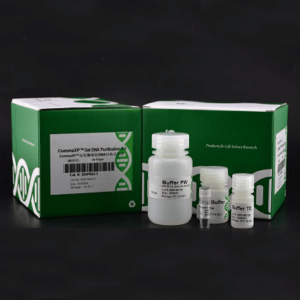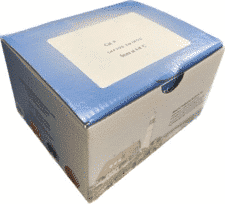2,4-D Test Kit (ELISA Plate)
INTENDED USE
The 2,4-D Plate Kit is an immunological laboratory test for the quantitative analysis of 2,4-D residues in water in the range of 2.0 to 100 ng/mL (parts per billion or ppb). Samples containing higher concentrations can be measured by pre-dilution of samples.
MATERIALS PROVIDED IN THE PLATE KIT
The kit in its original packaging can be used until the end of the month indicated on the box label when stored at 2 – 8ºC.
1 Frame containing 12 test strips of 8 wells each vacuum-packed in aluminized pouch with indicating desiccant.
1 vial of 10 ppm 2,4-D in methanol.
1 vial of 2,4-D-HRP Enzyme Conjugate.
1 vial containing 14 mL of Substrate.
1 vial containing 14 mL of Stop Solution. (Caution! 1N HCl. Handle with care.)
1 Instructional Booklet
SKU:
BAS-20-0011
Categories: Crops Protection Chemicals, Food
Description
ASSAY PRINCIPLES
The 2,4-D Plate Kit uses polyclonal antibodies that bind both 2,4-D and a 2,4-D-enzyme conjugate. 2,4-D in the sample competes with 2,4-D-enzyme conjugate for a limited number of antibody binding sites. Antibodies, which bind 2,4-D compounds, are immobilized to the inside of the test wells. In the assay procedure, you will:
•Add a sample containing 2,4-D to a test well, followed by 2,4-D-enzyme conjugate. The conjugate competes with any 2,4-D in the sample for the same antibody binding sites.
•Wash away any unbound molecules, after you incubate this mixture for 60 minutes.
•Add clear substrate solution to each well. In the presence of bound 2,4-D-enzyme conjugate, the substrate is converted to a blue compound. One enzyme molecule can convert many substrate molecules.
Since the same number of antibody binding sites are available in every well, and each well receives the same number of 2,4-D-enzyme conjugate molecules, a sample containing a low concentration of 2,4-D allows the antibody to bind many 2,4-D-enzyme conjugate molecules. The result is a dark blue solution.
Conversely, a high concentration of 2,4-D allows fewer 2,4-D-enzyme conjugate molecules to be bound by the antibodies, resulting in a lighter blue solution.
NOTE: Color is inversely proportional to 2,4-D concentration.
Darker color = Lower concentration
Lighter color = Higher concentration
IMPORTANCE of 2,4-D DETERMINATION
2,4-D is a phenoxy herbicide used in the control of broadleaf weeds. It is one of the most widely used herbicides in the world. In the United States alone, approximately 46 million pounds are used each year. 2,4-D is a selective herbicide, affecting broadleaf weeds but not grasses, making it ideal for use in both agricultural (cereal grain crops) and non-agricultural settings (residential lawns, along roadways, and in aquatic weed control in and around lakes). Humans may be exposed to 2,4-D through direct physical contact with treated plants or water sources or through ingestion of contaminated foods or drinking water. Drinking water sources can be contaminated through run-off (surface water) or leaching (groundwater). 2,4-D has been found in surface waters across the U.S. The U.S. EPA lists 2,4-D as a compound that is likely to leach from soil and it has been found in groundwater in the U.S. as well as in Canada. Human exposure to 2,4-D can cause liver toxicity at low doses, producing inflammation, jaundice, and even acute hepatitis. Golfers exposed to 2,4-D have shown permanent liver damage leading to cirrhosis. Damage may also occur to the kidneys and adrenals, ovaries, testes, and thyroid. 2,4-D can cause neurotoxicity and has been linked to an increased risk of amyotrophic lateral sclerosis (ALS, also known as Lou Gehrig’s Disease).
The EPA, under the Safe Drinking Water Act, has established a maximum contaminant level (MCL) of 70 ppb in drinking water. The World Health Organization has established an Acceptable Daily Intake (ADI) of 0.01 mg/kg of body weight. The 2,4-D ELISA allows for the analysis of 41 samples in duplicate determination. Less than 1 mL of sample is required. The test can be performed in less than 2 hours.
Additional information
| Format: |
96-well microtiter plate (12 test strips of 8 wells) |
|---|---|
| Standards: |
0 ,2 ,20 ,200 ppb |
| Incubation Time: |
90 Minutes |
Shipping & Delivery



